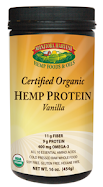"Get The Sugar Out" is a book published from one of my favorite authors, Louise Gittleman, a well respected health pioneer on weight loss and award winning author of twenty five books. In her book, Louise Gittleman explains how sugar contributes to weight gain, mood swings, immune system deficiencies, diabetes, cardiovascular disease and some forms of cancers. In addition, it also goes into detail about the origin and harmful side effects of many artificial sweeteners such as Splenda, Malitol and many others on our bodies. It provides many natural substitutes that are low on the glycemic index, less toxic and harmful and better for the waste line. Thus, providing great insight to help people make better choices when purchasing snacks or packaged food that contains artificial sweeteners.
After I read the book, I found that I became a sugar detective. I started to browse the isles of the grocery store noticing the lack of products with natural sweeteners and a surplus consisting of Splenda, Malitol, Aspartame and the likes. Prior to reading the book, I was oblivious as to how bad artificial sweeteners actually were and the harmful side effects they have on our body. My personal experience was when I ate "no sugar added" licorice. After eating the licorice, my stomach was in so much pain and discomfort. I later realized, after reading the book, that it wasn't the licorice that had caused major discomfort but rather the product was laced with Malitol- a major gastric distress hidden at the back of the package in the list of ingredients and a replacement for sugar. Boy was that great marketing. I am now very cautious of the types of foods and snacks I purchase, especially, no sugar added products.
Notice how "reduced sugar" or "sugar free" products have skyrocketed. Lets take Splenda as an example. It is an artificial sweetener that is harmful and toxic to our bodies. It has been linked to a variety of symptoms such as: severe headaches, dizziness, cramps, mood swings, seizures, convulsions, changes in vision and abdominal pain. Product labels, such as Jelly Belly's suggest that children under 3 years of age should not consume sugar free products because their immature digestive system could trigger massive discomfort. Sure lets remove sugar and replace it with artificial sweeteners such as Splenda or Malitol and slap a sugar free label on it.
Splenda aka Sucralose is one of the most popular sweeteners found in over 5000 packaged foods and was discovered in 1976 made by chlorinating sugar. The same chemical found in swimming pools and we are putting this in our bodies! It was discovered accidentally by scientists looking for ways to test chlorinated sugars as intermediates. Two scientist were working together and one scientist said to the other scientist to test the powder. Well, the scientist thought he said to taste it and so he did. It was very sweet. The rest is history. Whole Foods currently takes a strong stance and has banned any products containing Sucralose from being sold in the store. A major contributing factor was that most studies conducted were commissioned by organizations that had an invested interest in the approval of the sweetener.
The example above is just one artificial sweetener of the many artificial sweeteners that we should be avoiding. In her book, Louise Gittleman goes into detail about the major side effects of various other sweeteners found in our food. She provides many natural substitutes that you should use instead in your baked goods and when buying your groceries. When I read the book, my entire outlook on sugar changed and I became smart about what I wanted to put in my body. So the next time you decide to pick up that "no sugar added" product, look at the ingredients and see if in fact there is no sugar or if its substituted with the artificial kind. You might want to think twice about your purchase.




.jpg)


